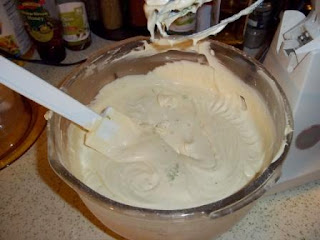In our continuing cover of all things citrus, this week I’d like to talk to you about oranges! So...much...stuff...to know. I've tried to narrow it down, but there's some real cool things that I didn't know, so here goes.
No one will be surprised to learn that they are super fabulous good for you, chocked full to the brim with all sorts of healthy nutriousness.
● Oranges are actually really good for dieting because they are low in calories, contain no saturated fats or cholesterol, but most importantly are rich in pectin which was described by once source as a dietary fiber that acts as a bulk laxative.
● Pectin has also been shown to reduce blood cholesterol levels.
● As we all know, oranges are an excellent source of vitamin C (pulling in about 60% of your Daily Recommended Intake) which is a powerful natural antioxidant.
● Oranges contain very good levels of vitamin A also know to have antioxidant properties.
● And oranges can be a good source of B-complex vitamins too.
● Orange fruit also contains minerals like potassium and calcium.
All parts of the orange can be used for something.
● The fruit sections make a nice addition to salads and both savory and sweet dishes.
● The juice, besides being a fabulous stand-only beverage is used to sweeten jams, jellies and sauces.
● Dried orange blossoms and leaves are used for herbal tea.
● Orange peel (zest) can be used for flavoring and actually contains the highest level of vitamin C and fiber found in the fruit.
● Orange blossoms are an essential component in perfume-making.
● Besides being edible, orange peel is used in exfoliating facial scrubs and bath oils because it’s good for your skin.
And here are some lesser-known uses for orange peel.
● Keeping ants, slugs, and cats away from your garden.
● Being used as kindling…for a fire…in your fireplace.
● Using as a deodorizer.
● Repelling mosquitoes by rubbing them on yourself (good times).
Oranges are believed to have originated in Southeast Asia and are known to have been cultivated in China by 2500 BC.
Italian traders are credited with introducing oranges to the Mediterranean area in the 15th century where they thrived. It became popular in Europe, so much so that many wealthy persons would grow their own in specially designated hothouses known as orangeries (like the one at Versailles).
Because of their wonderful anti-scurvy property, citrus trees were planted along trade routes to allow easy access to the fruit.
Christopher Columbus was the man who made them possible in the New World by bringing citrus seeds with him on his second voyage in 1493.
From there they spread north to Florida and Louisiana and west to South America, Mexico and the North American West by Spanish explorers in the 1500s. In 1792, oranges made their way to Hawaii.
The oranges we know today are called “sweet” oranges, and there is another orange species known as bitter oranges (those would be the Seville oranges). Other common types of oranges are the bergamot orange (it’s primarily used for its peel which helps flavor Earl Grey tea), the mandarin orange which is like the large sweet orange only much small and less acidic (also has a thinner easier to peel peel), and blood oranges which are much darker (due to an abnormal, though naturally occurring, red pigmentation) and have the most tasty juice of them all.
Oranges are the most commonly grown fruit trees in the world, with Brazil being the largest orange-producing nation.
Now, orange you glad you know this stuff.
(Hahahahah...yeah, I should've resisted but oh well.)





















.jpg)




















